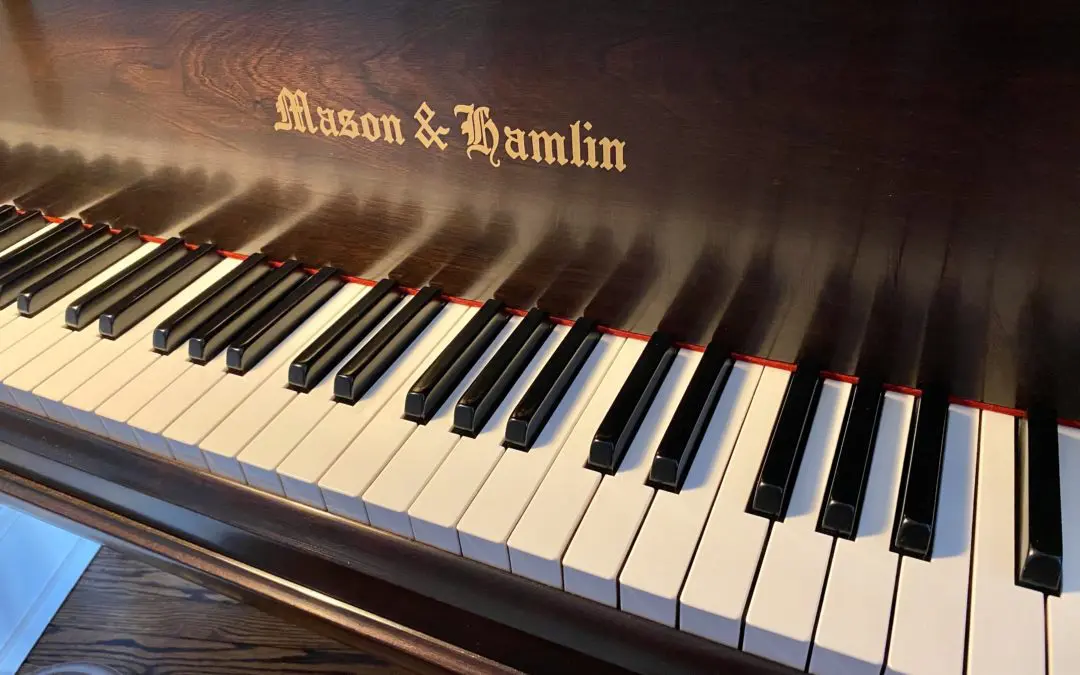I begin every day by switching on the retro-radio in my kitchen and enjoying a cup of freshly brewed coffee. This is a nice way to start things off. Soon after I will exercise a bit and begin what I hope will be a busy day. Now, however, I am still at home like most people, shut in by the coronavirus which has overcome the world at this time.
After having coffee this morning, I finished tuning the beautiful 1927 Mason & Hamlin Model A (4) grand piano at home. I tend to be a little obsessive about keeping this piano in tune and have been teaching virtual piano lessons for these past several weeks, via zoom and Facetime for my students. Maybe I am being a little ridiculous; this is the third tuning since Christmas for this instrument, but there is some history here. I rebuilt M&H 36369 shortly after my Father’s death in 1984 for my brother, who adopted it for use in his home. Now I am using it, joyfully! It is especially nice to be connected in this way. When I was a child, the piano lived in my Father’s studio, alongside another Mason & Hamlin grand piano. I remember playing it during piano concerto competition rehearsals, with my dad. It was old then and in need of restoration. We had trouble keeping it in tune, for one thing. The pinblock had become weak, a common condition which prevents the tuning pins from holding. Eventually, it was fully restored with a hard rock maple pinblock, new strings and tuning pins, new Abel hammers and custom action parts. We did the work at my restoration facility, Chicago Piano Service, Inc.
Vintage Mason & Hamlin Grand Pianos are quite heavy, and this one is no exception. At just over 875 pounds, it is more than 230 pounds heavier than a comparable Steinway of that time. The top, especially, is remarkably heavy to lift. I keep mine closed and like all the pianos at the Cappelli Institute in Oak Park IL, it is fitted with a soft fleece string cover under the lid. This helps keep the inside clean, minimizes high partials in smaller spaces, and looks nice, besides.
As I lifted the top this morning to complete the tuning, I marveled again at the weight and wondered, “What makes this piece of wood so heavy?” The answer, of course, is the superb quality of the materials used and the beautiful maple core wood beneath figured walnut veneers that wrap the entire cabinet.
I love this piano, the fact that my dad had played it throughout my youth, that it lives on in a beautifully resonant space, that I learned to tune while in college and have utilized that skill for a large part of my musical career. What a joy to understand and respect the craftmanship of bygone eras and perform pieces by composers who wrote for this great instrument through the years!
-JC

